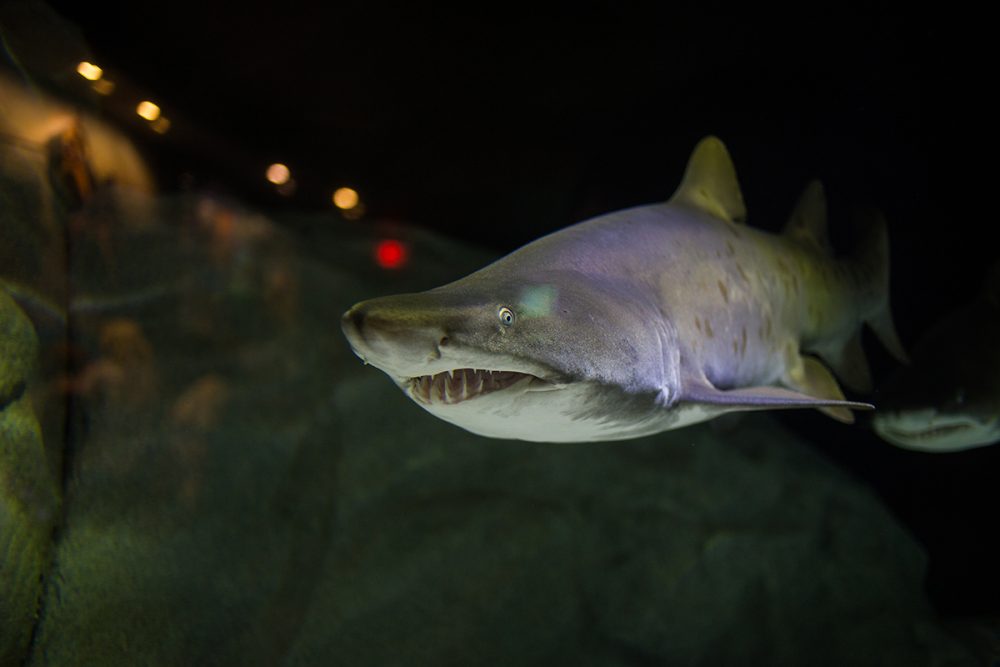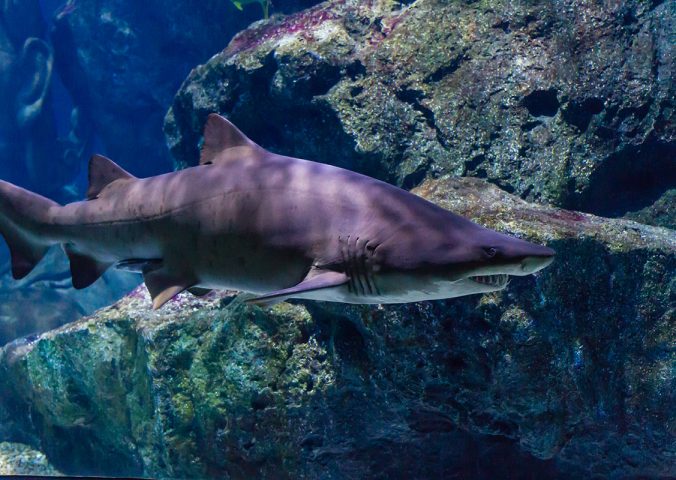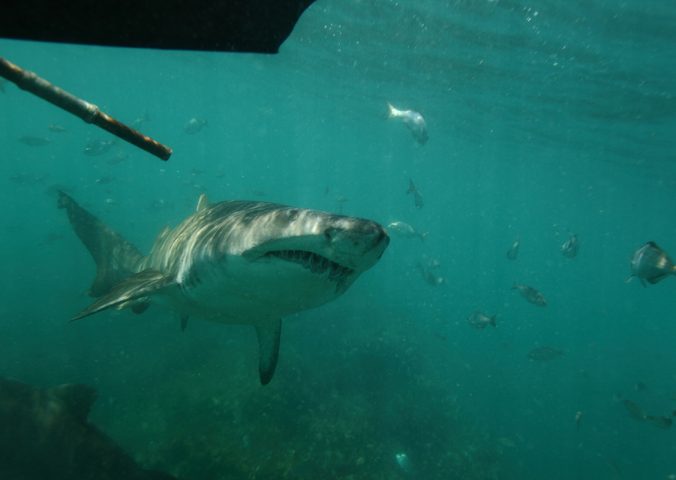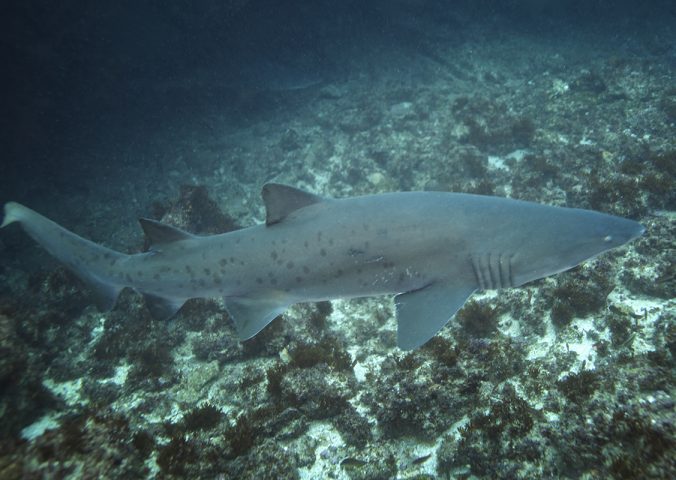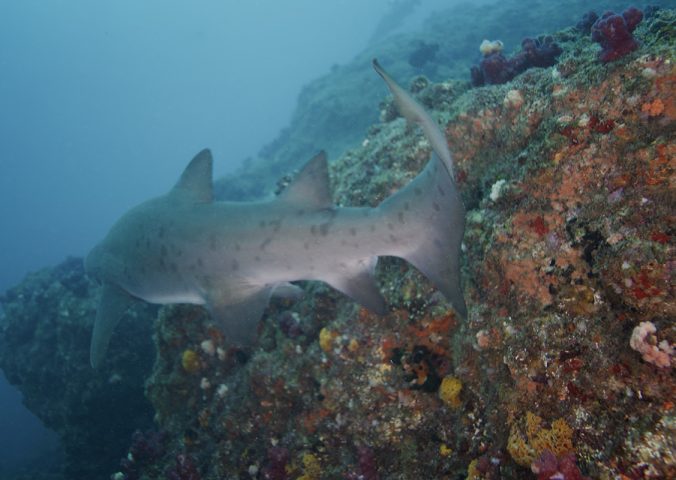About
The sand tiger shark is a large coastal species, popular in aquariums due to its “scary” protruding teeth and its tolerance in captivity.
Typically solitary, sand tiger sharks are known to undertake complex size and sex-segregated migrations in the waters off South Africa and the east coast of the United States. Sand tiger sharks have a rather gruesome reproductive technique called intrauterine cannibalism; embryos reach 17cm long and develop teeth; the largest embryo in each uterus kills and eats its siblings, leaving a litter of just 2 pups, one in each uterus, each measuring around a meter long. The pups are born as effective hunters in an extreme version of survival of the fittest! This species has one of the lowest reproductive rates known among chondrichthyans.
As an economically important species their main threat is overfishing driven by demand for their fins and liver oil across Asia. Due to their life history, population recovery is particularly slow. According to the IUCN Red List of threatened species, management measures of fisheries in the USA and Australia have been put in place to protect the species.
The sand tiger shark is known by a number of other common names including; grey nurse and spotted ragged-tooth shark.
- Order: Lamniformes
- Family: Odontaspididae
- Population: Unknown
- Trend: unknown
- Size: Up to 3.2m (?)
- Depth Range (m): Up to 200 m
EDGE Score
Distribution
The sand tiger shark has a wide ranging inshore distribution in subtropical to warm temperate waters with the exception of the eastern Pacific and South America.
Habitat and Ecology
The sand tiger shark is an inshore species found around the surf zone and in bays and reefs, associated with underwater caves, gullies and reefs. It is also frequent in deeper areas around the continental shelf. It is a migratory species, moving towards the poles in warmer months and to the equator in cooler months. These migrations are usually segregated by sex and size. They feed on fish, smaller sharks, rays, squids, crabs and lobsters. This species is usually found near the bottom, but it occasionally roams in midwater.
